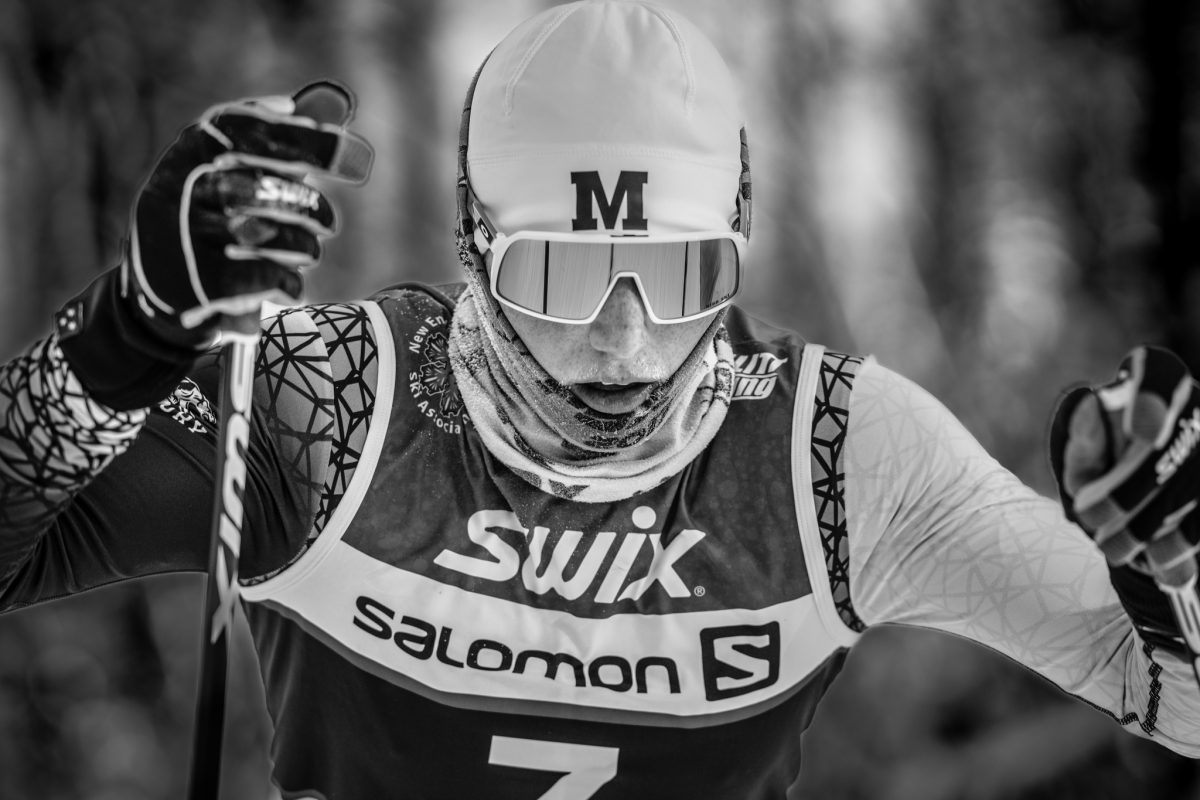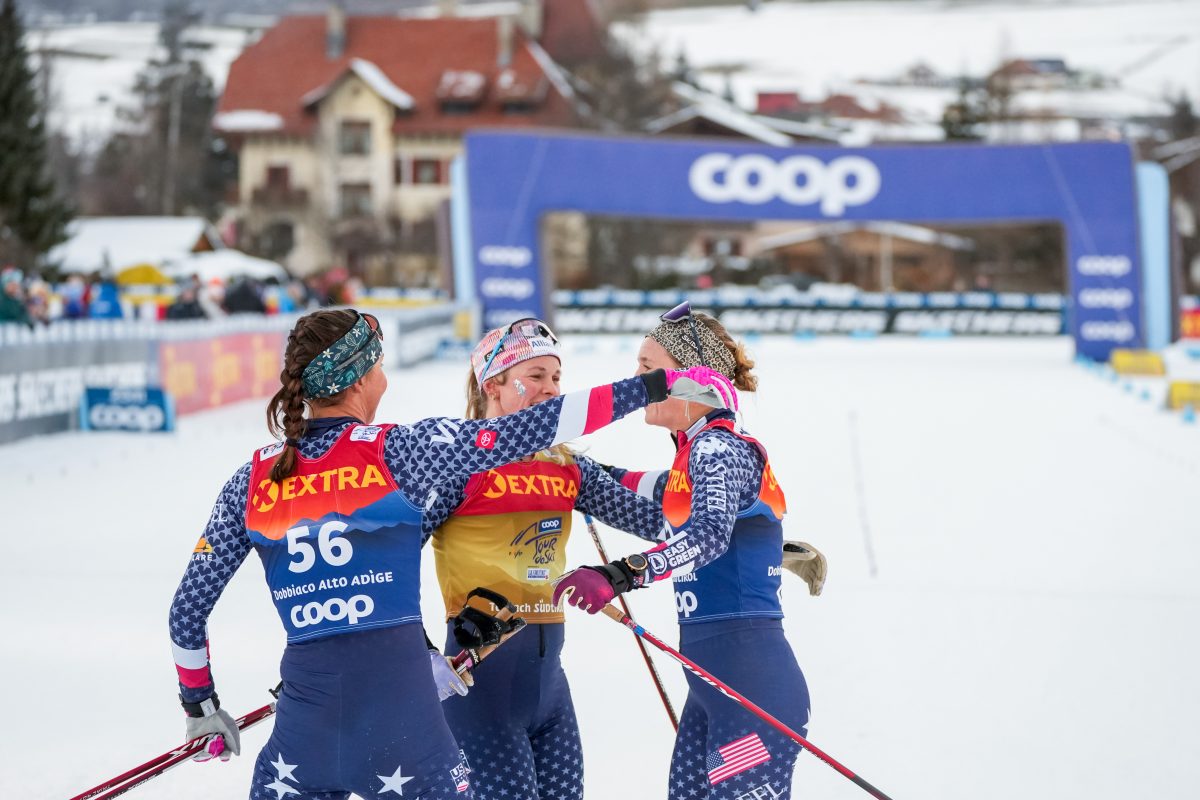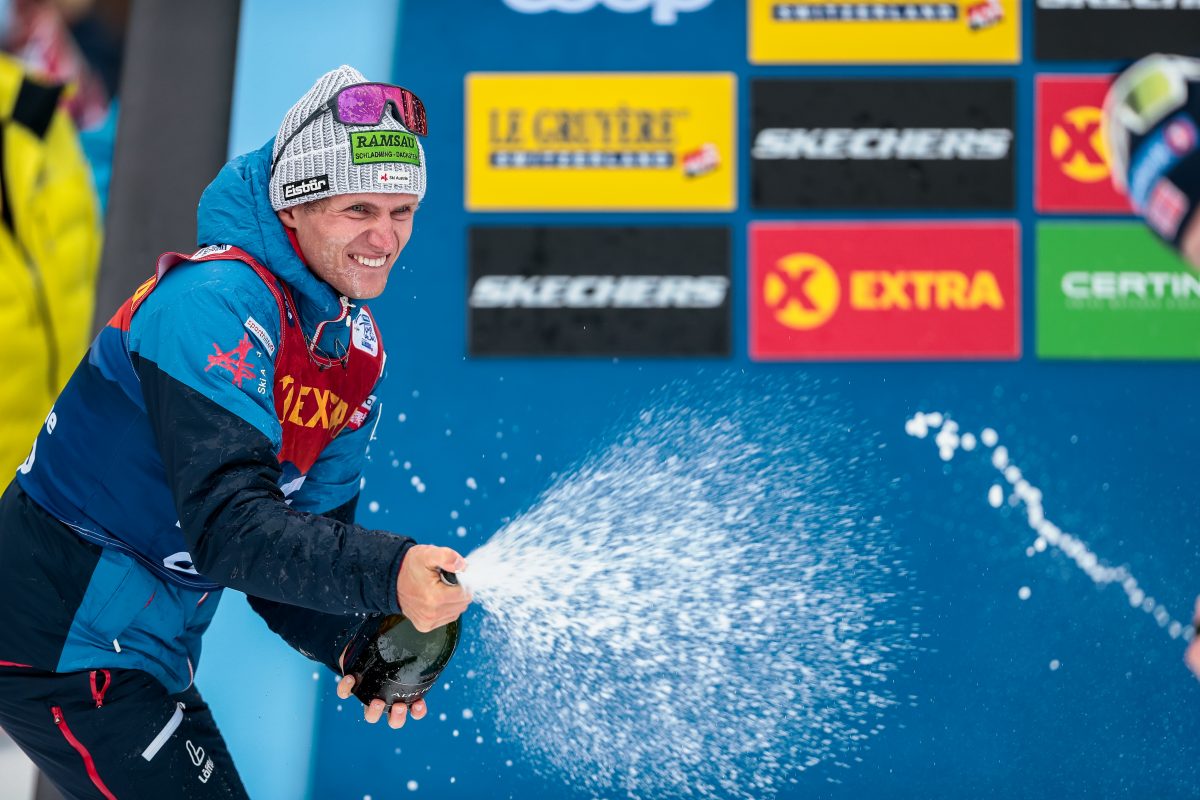Nathan Schultz is the owner of Boulder Nordic Sport and a former ski racer. www.bouldernordicsport.com
The Master World Cup comes to McCall, Idaho Mar 1-7, 2008 and it is looking to be a big event. Boulder Nordic Sport is running a Race Waxing Service at World Masters and in preparation I previewed the courses and tested grinds in McCall February 16 and 17th. I also had the chance to talk to John Downing, the National Masters Director to get his perspective on this massive organizational undertaking.
I raced at Ponderosa State Park many times when they held the National Championships here and during the glory years of the Idaho International Spring Series, but they have re-routed and added trails since then and I was excited to come take a look and test our grinds on the World Masters courses. We previewed the 5km, 10km and 15km loops, which covers all of the World Masters races. The courses are wide, straightforward and fun, providing a great venue for the 1400+ racers who have registered for the Championships.
The sheer amount of snow on the ground in McCall is striking. Seven feet of snow fell in seven days the week before I arrived and paths cut to houses and trails are shoulder-deep. In many places, snow is piled 20 and 30 feet high in a desperate attempt to find some place to move it. The trails were well-packed except for a short section where it appears they are just starting to get it solidified after the onslaught of snow. Snow and grooming conditions should be ideal for the WMC, even if no snow arrives between now and then.
Trail Conditions & Waxing
We saw cold morning temperatures under clear skies give way to sunny, warm afternoons. The courses are just off of a large lake and a layer of fog and mist was floating in some areas until 9-10AM. Snow was fast, even with morning temperatures of -15C and universal/warm grinds were running better than fine cold grinds, even early in the morning. Waxing for the races should be fairly straightforward, although expect to use a lot of high-fluorination waxes during the week with mild temperatures and humid snow the norm for this time of year.
One issue racers will confront is dealing with dirt. The Ponderosa forest that towers above the trails is a beautiful spectacle, but debris from the trees will definitely be an issue. Pine needles, branches and clumps of brown moss that look like bad hairpieces litter the trail and are especially thick in a few areas. Past experience racing here has given varied track conditions from fairly clean after a fresh covering of snow to quite dirty after a wind storm. Cleaning skis effectively after training and using dirt-resistant waxes will be important, especially for the longer races.
Course Preview
The courses themselves are well-designed for this event. The Start loop is very wide, flat and free of bottlenecks and there is adequate passing room everywhere along the full-length of the courses. There are not overly-technical sections or difficult hills, but one long, gentle climb and a winding, undulating finish section provide plenty of areas for strong and skilled skiers to make up time on the rest of the field. There are only a few short sections for rest, so competitors should be prepared for long, high-speed flat sections with little recovery.
All of the loops start on the same 2.5km section that loops around the stadium area, heads over to the lake and then cuts on the opposite side of the stadium out to a wide gentle road-grade that climbs very gradually to a left-turn and the first descent of the course. A fast gradual descent with no turns heads toward the lake and the first variations between the loops. The 5km and 10km courses do a short lollipop down by the lake, while the 15km loop adds a very short climb followed by a rolling, turny section through the woods. The 5km course turns around and heads straight up a trail parallel to the descent and then connects to the last 2km of the 10km and 15km loops.
The 10km and 15km loops join together as they make a left turn out onto a peninsula. A long flat is ends with a short (30m) gradual uphill and then the 15km trail splits off left to do an extra loop that is roughly 2km. The 15km loop follows the lakeshore, rolling and weaving through a beautiful section of forest. Another short, punchy incline is followed by a long gradual downhill where it makes a sharp left to rejoin the 10km loop.
A few rollers with fast, flat sections turn right around a marshy lake and then head up the only significant climb. I did a race pace test of the 10km A loop on reasonably fast snow and it took 13 minutes to arrive at the bottom of this hill. The course is so flat and fast that it was 100% V2 and V2-alternate up until this point, without question. The hill is fairly gradual with a few short, steep pitches toward the top, but with the fast snow, I was able to V2 up the entire climb. It took me 3:30 from the bottom to the top.
At the top of the climb, the men’s courses split off from the women’s for a challenging descent and sharp climb while the women descend a straightforward, wide road for roughly 700m before the courses come back together. For the men, a quick right and off-camber left turn precede a short, steep hill and another descent weaving through a thick forest. A steep 150m climb and short connector pops the men back together with the women’s courses and they follow each other to the finish.
The long, gradual downhill leads into a flat and then a short rise before the courses once again diverge. The finish loops are slight variations on each other, but all of them end with a few short rollers that weave through the trees, providing opportunities for technical skiers to gain time on the many transitions before popping back out of the trees for the finishing straight into the stadium.
From previous experience racing here combined with our recent previews, it is obvious to me that racers should come prepared to ski a lot of high-speed flats with little or no rest. The majority of time will be spent double-poling and using V2/V2-alternate, and the fittest skiers will probably only stride or V1 for two minutes or less on the entire course. The one major hill will take between 3 and 7 minutes for most racers and is positioned right in the middle of the race. There are many sections of rolling hills and twisty trails where fast transitions and mental focus will gain time.
A Short Interview with John Downing, US National Masters Director
BNS: You’ve worked hard getting this event to happen. What excites you most about it now that it is almost here?
JD: I'm most excited about seeing the hard work of the local Organizing Committee finally blossom into what should be a fantastic event. We have exceeded all our projections on turnout. There is a huge snow pack on the ground. After all the hard work it is finally time to show off McCall to the XC ski world.
BNS: What have been the biggest challenges to making this event happen? What will be the most difficult logistical challenges during the event?
JD: Certainly financial hurdles were the biggest challenges in the past couple years. This is a half million dollar event to put on and you only get a fraction of that from entry fees, so a massive amount of sponsorship and in-kind local support has to be involved for the MWC to happen. Luckily the McCall area has seen tremendous growth in the past half decade and a number of sponsors — most notably Blackhawk the presenting title sponsor — stepped up and underwrote a big chunk of the cost. The other huge asset McCall had going for it was the support from Ponderosa State Park and the state parks department. It is mind-boggling how much those folks have contributed with in-kind support.
During the event week the biggest challenge for the organizers will be balancing any special needs of the foreign athletes with the normal challenges of a really huge event week. This event is effectively seven different races over a seven day span with an average of 600+ skiers each day. So it's similar to combining the U.S. Speed Nationals and Junior Nationals into one event. Pretty daunting.
From my role, the big challenge is keeping 660+ U.S. skiers educated about the nuances of the MWC event the entire week. The more I can educate and organize the massive U.S. contingent, the less headaches for the local Organizing Committee.
BNS: What “extra-curricular†events do you expect to be the most interesting for racers to attend?
JD: Mostly the ceremonies will be the biggest show since they are a step up in formality from your usual citizen race. I think a lot of people are also just going to enjoy skiing all the various trail systems they have in the McCall area. There are a good half dozen spots with daily groomed trails plus loads of snowmobile roads and backcountry skiing. That's going to be keeping a lot of folks busy I'm sure.
BNS: Are there any World Masters events planned for North America in the future?
JD: The 2011 Masters World Cup will be in Canada. It looks like a showdown in the bidding between Silver Star, B.C. and Canmore, Alberta. I'm very familiar with both places and I see tons of upside to both. That should be an event very similar to the MWC2008 in many ways with moderate altitude in a western NorAm setting. 2009 is in Autrans, France and 2010 in Falun, Sweden — both of which are locations I'm super excited to visit. I think we'll have huge groups on both those trips and AXCS already has a non-profit travel package in place for both years (we act quick!).
It's a very good question when the Worlds will be in the USA again. The World Masters Association will be reviewing our bid rotation this summer and things are likely to change as there are so many new viable options in Eastern Europe now on the horizon. For the future, where it might happen in the U.S. again is a good question. This is a very difficult event to locate as the demands are quite specific. McCall really was a special fit.
BNS: Are there any races during the week that you are especially excited about?
JD: I'll personally be excited about the relay simply because the hardest part of my week is going to be sitting down with the first four race results in hand and putting together all our USA relay teams. I enjoy the relay day more than other days mostly because I don't have to think so much anymore! In Europe it's not so bad because our depth is never this incredible. But with 660+ Americans, there are bound to be some tough decisions as we should have a shot at a relay medal in literally every men's and women's category.
BNS: Do you expect any country to dominate the racing?
JD: Well, the USA will certainly have the edge simply because of sheer numbers so we'll likely get more medals than in a typical European-hosted Worlds. But if you go off of relative success, it's hard to ever bet against the Russians. When we had the Worlds in Moscow (2005) I was simply shocked by how deep that nation is with really, really, really good skiers at absolutely every age level. When you are in Scandinavia or Central Europe, you see incredible skiing at all ages. But in Russia it is like an army hitting you at every 5 year group. So whomever they bring will be tough.
Masters World Cup Web Site: www.mwc2008.com




